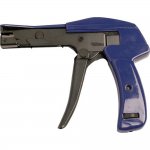marmathsen
Senior Member
- Location
- Seattle, Washington ...ish
- Occupation
- Electrical Contractor
Not sure if it's a true story but an instructor I had several years ago told the class that a young electrician (or trainee) in Tacoma grabbed both sides of a separated piece in EMT. There was a fault and he ended up completing the path...through his body. He didn't make it.
True or not, it made an impression. Between EMT and wire type EGC, the latter seems like the better choice for longevity.
Rob
True or not, it made an impression. Between EMT and wire type EGC, the latter seems like the better choice for longevity.
Rob


